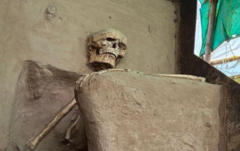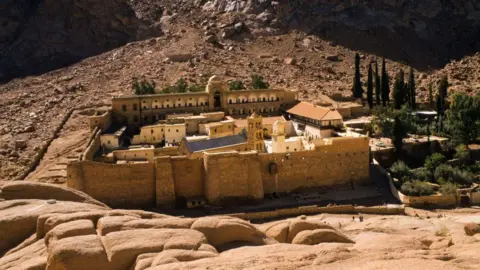The ancient skeleton discovered in Vadnagar, Gujarat, remains without a permanent home six years after its unearthing due to bureaucratic wrangling. Archaeologist Abhijit Ambekar made the significant find in 2019 when he excavated the remains of a human skeleton believed to be about 1,000 years old, positioned in a meditative cross-legged posture. Despite its archaeological significance and the discovery of similar remains at only three other sites in India, the skeleton currently resides in a makeshift shelter.
Ambekar, who leads the Archaeology Survey of India (ASI) division in Mumbai, contends that the skeleton, which likely dates back to the Solanki dynasty period (940-1300 CE), can enhance our understanding of ancestral lifestyles. Yet, red tape and bureaucratic disputes over its custody have left the skeleton vulnerable to the elements, as it awaits placement in a local museum alongside around 9,000 other artefacts unearthed from Vadnagar.
Officials from the Gujarat government insist that the skeleton is still under the ASI's supervision; therefore, proper procedure for its museum placement has not been followed. The current site, a tarpaulin shelter exposed to weather shifts, is far from ideal, lacking security measures and proper care.
Local citizens are frustrated by the inaction, noting that the skeleton's plight highlights the paradox of a newly built Archaeological Experiential Museum nearby, which, despite showcasing Vadnagar's rich historical narrative, does not contain the actual remains. The museum was inaugurated in January at a cost of $35 million, displaying over 5,000 artefacts.
Historical excavations have revealed traces of human settlements in Vadnagar for more than 2,000 years, including remnants of ancient Buddhist monasteries and other artefacts. The skeleton, estimated through advanced DNA analysis and stratigraphic studies of its excavation site, is believed to belong to a man in his forties and could shine a light on ancient burial practices known as "samadhi burials."
Efforts to secure the skeleton's transfer to a proper museum environment equipped with temperature and humidity controls are under discussion. Local voices echo the urgency; citizens fear this unique find may not receive the treatment it deserves while floating amid bureaucratic delays. According to Vadnagar residents, the skeleton represents a cherished connection to their town's heritage and potential for tourism, emphasizing the need for swift action in preserving this invaluable piece of history.
Ambekar, who leads the Archaeology Survey of India (ASI) division in Mumbai, contends that the skeleton, which likely dates back to the Solanki dynasty period (940-1300 CE), can enhance our understanding of ancestral lifestyles. Yet, red tape and bureaucratic disputes over its custody have left the skeleton vulnerable to the elements, as it awaits placement in a local museum alongside around 9,000 other artefacts unearthed from Vadnagar.
Officials from the Gujarat government insist that the skeleton is still under the ASI's supervision; therefore, proper procedure for its museum placement has not been followed. The current site, a tarpaulin shelter exposed to weather shifts, is far from ideal, lacking security measures and proper care.
Local citizens are frustrated by the inaction, noting that the skeleton's plight highlights the paradox of a newly built Archaeological Experiential Museum nearby, which, despite showcasing Vadnagar's rich historical narrative, does not contain the actual remains. The museum was inaugurated in January at a cost of $35 million, displaying over 5,000 artefacts.
Historical excavations have revealed traces of human settlements in Vadnagar for more than 2,000 years, including remnants of ancient Buddhist monasteries and other artefacts. The skeleton, estimated through advanced DNA analysis and stratigraphic studies of its excavation site, is believed to belong to a man in his forties and could shine a light on ancient burial practices known as "samadhi burials."
Efforts to secure the skeleton's transfer to a proper museum environment equipped with temperature and humidity controls are under discussion. Local voices echo the urgency; citizens fear this unique find may not receive the treatment it deserves while floating amid bureaucratic delays. According to Vadnagar residents, the skeleton represents a cherished connection to their town's heritage and potential for tourism, emphasizing the need for swift action in preserving this invaluable piece of history.





















